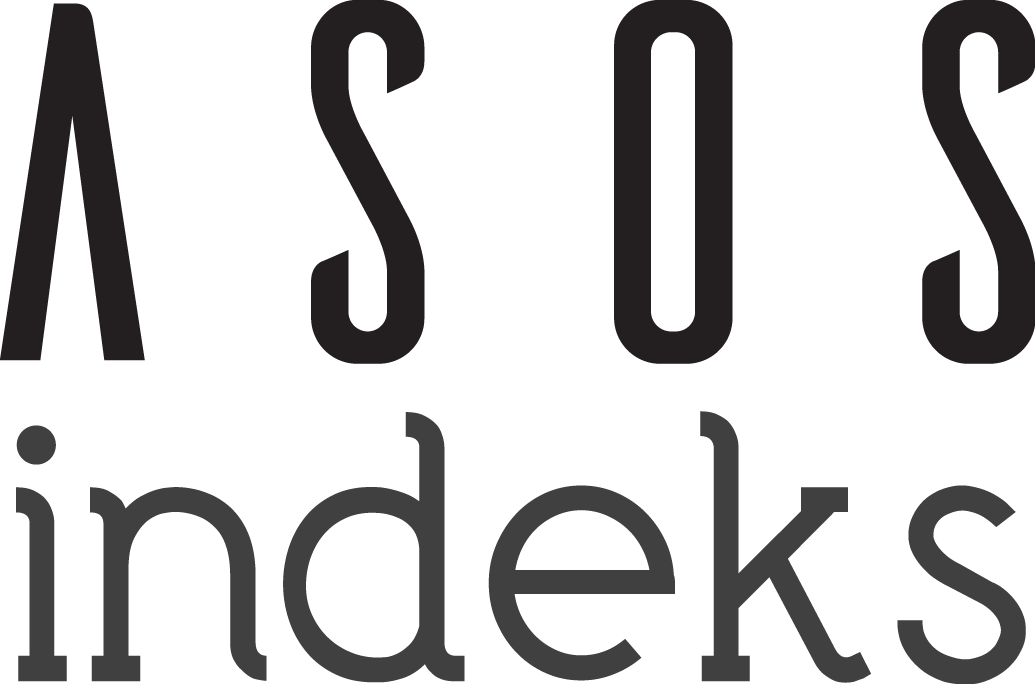Identification of hub genes and enriched pathways in renal ischemia–reperfusion injury via integrative transcriptomic and network analysis
Abstract
Aims: This study aimed to identify key genes and pathways involved in the pathogenesis of renal ischemia–reperfusion injury (IRI)-induced acute kidney injury (AKI) using an integrative bioinformatics approach.
Methods: Publicly available gene expression profiles from two independent rat kidney microarray datasets (GSE27274 and GSE58438) were analyzed to identify differentially expressed genes (DEGs) between IRI and control groups. DEGs with an adjusted p-value <0.05 and |log2 fold change| >1 were considered significant. Common DEGs from both datasets were subjected to Gene Ontology (GO) and Kyoto Encyclopedia of Genes and Genomes (KEGG) enrichment analyses. Protein–protein interaction networks were constructed using STRING and cytoscape, and hub genes were identified with the maximal clique centrality algorithm via the CytoHubba plugin.
Results: A total of 189 overlapping DEGs were identified (117 upregulated, 72 downregulated). Upregulated DEGs were enriched in pathways associated with glutathione metabolism and oxidative stress response, while downregulated DEGs were associated with DNA replication and inflammatory signaling. Hub genes for upregulated DEGs included Gclc, Gclm, Anpep, and Gss, while downregulated hub genes included Mcm2, Gins1, Pcna, and Tnf. These genes represent potential regulatory nodes in the renal IRI response.
Conclusion: This study highlights redox regulation, amino acid metabolism, immune modulation, and cell cycle arrest as major components in the molecular pathogenesis of renal IRI. The identified hub genes may serve as potential diagnostic biomarkers and therapeutic targets. These findings provide a framework for future experimental validation and drug development efforts in AKI caused by IRI.
References
- Wang HJ, Varner A, AbouShwareb T, Atala A, Yoo JJ. Ischemia/reperfusion-induced renal failure in rats as a model for evaluating cell therapies. Renal Failure. 2012;34(10):1324-1332. doi:10.3109/0886022x. 2012.725292
- Saat TC, van den Akker EK, JN IJ, Dor FJ, de Bruin RW. Improving the outcome of kidney transplantation by ameliorating renal ischemia reperfusion injury: lost in translation? J Transl Med. 2016;14(1):20. doi: 10.1186/s12967-016-0767-2
- George J, Lu Y, Tsuchishima M, Tsutsumi M. Cellular and molecular mechanisms of hepatic ischemia-reperfusion injury: the role of oxidative stress and therapeutic approaches. Redox Biol. 2024;75:103258. doi:10. 1016/j.redox.2024.103258
- Yuan Y, Sheng P, Ma B, et al. Elucidation of the mechanism of Yiqi Tongluo Granule against cerebral ischemia/reperfusion injury based on a combined strategy of network pharmacology, multi-omics and molecular biology. Phytomedicine. 2023;118:154934. doi:10.1016/j.phymed.2023.154934
- Huang Y, Peng J, Liang Q. Identification of key ferroptosis genes in diabetic retinopathy based on bioinformatics analysis. PloS One. 2023; 18(1):e0280548. doi:10.1371/journal.pone.0280548
- Barrett T, Wilhite SE, Ledoux P, et al. NCBI GEO: archive for functional genomics data sets--update. Nucleic Acids Res. 2013;41(Database issue): D991-995. doi:10.1093/nar/gks1193
- Tang D, Chen M, Huang X, et al. SRplot: a free online platform for data visualization and graphing. PLoS One. 2023;18(11):e0294236. doi:10. 1371/journal.pone.0294236
- Sherman BT, Hao M, Qiu J, et al. DAVID: a web server for functional enrichment analysis and functional annotation of gene lists (2021 update). Nucleic Acids Res. 2022;50(W1):W216–W21. doi:10.1093/nar/gkac194
- Shannon P, Markiel A, Ozier O, et al. Cytoscape: a software environment for integrated models of biomolecular interaction networks. Genome Res. 2003;13(11):2498–504. doi:10.1101/gr.1239303
- Chin CH, Chen SH, Wu HH, Ho CW, Ko MT, Lin CY. cytoHubba: identifying hub objects and sub-networks from complex interactome. BMC Syst Biol. 2014;8(Suppl 4):S11. doi:10.1186/1752-0509-8-S4-S11
- Yoon SY, Kim JS, Jeong KH, Kim SK. Acute kidney injury: biomarker-guided diagnosis and management. Medicina (Kaunas). 2022;58(3):340. doi:10.3390/medicina58030340
- Lasorsa F, Rutigliano M, Milella M, et al. Ischemia-reperfusion injury in kidney transplantation: mechanisms and potential therapeutic targets. Int J Mol Sci. 2024;25(8):4332. doi:10.3390/ijms25084332
- Deger M, Akdogan N, Izol V, Kaplan HM, Pazarci P, Aridogan IA. Protective effect of naringin in rat model of renal ischemia reperfusion injury. Rev Nefrol Dial Tras. 2021;41(2):113-118.
- Lu SC. Glutathione synthesis. Biochim Biophys Acta. 2013;1830(5):3143-3153. doi:10.1016/j.bbagen.2012.09.008
- He L, Shi Y. Reduced glutathione ameliorates acute kidney injury by inhibiting ferroptosis. Mol Med Rep. 2023;27(6):123. doi:10.3892/mmr. 2023.13011
- Azarova I, Polonikov A, Klyosova E. Molecular genetics of abnormal redox homeostasis in type 2 diabetes mellitus. Int J Mol Sci. 2023;24(5): 4738. doi:10.3390/ijms24054738
- Ye M, Lin W, Zheng J, Lin S. N-acetylcysteine for chronic kidney disease: a systematic review and meta-analysis. Am J Transl Res. 2021;13(4):2472-2485.
- Aranda-Rivera AK, Cruz-Gregorio A, Amador-Martinez I, et al. Sulforaphane protects from kidney damage during the release of unilateral ureteral obstruction (RUUO) by activating nuclear factor erythroid 2-related factor 2 (Nrf2): role of antioxidant, anti-inflammatory, and antiapoptotic mechanisms. Free Radic Biol Med. 2024;212:49-64. doi:10.1016/j.freeradbiomed.2023.12.022
- Xu B, Zhang P, Tang X, et al. Metabolic rewiring of kynurenine pathway during hepatic ischemia-reperfusion injury exacerbates liver damage by impairing NAD homeostasis. Adv Sci (Weinh). 2022;9(35):e2204697. doi:10.1002/advs.202204697
- Liu YR, Yang NJ, Zhao ML, et al. Hypericum perforatum L. Regulates glutathione redox stress and normalizes Ggt1/anpep signaling to alleviate OVX-induced kidney dysfunction. Front Pharmacol. 2021;12: 628651. doi:10.3389/fphar.2021.628651
- Azizi F, Seifi B, Kadkhodaee M, Ahghari P. Administration of hydrogen sulfide protects ischemia reperfusion-induced acute kidney injury by reducing the oxidative stress. Ir J Med Sci. 2016;185(3):649-654. doi:10. 1007/s11845-015-1328-z
- Bos EM, Wang R, Snijder PM, et al. Cystathionine gamma-lyase protects against renal ischemia/reperfusion by modulating oxidative stress. J Am Soc Nephrol. 2013;24(5):759-770. doi:10.1681/ASN.2012030268
- Zwilling D, Huang SY, Sathyasaikumar KV, et al. Kynurenine 3-monooxygenase inhibition in blood ameliorates neurodegeneration. Cell. 2011;145(6):863-874. doi:10.1016/j.cell.2011.05.020
- Kellum JA, Chawla LS. Cell-cycle arrest and acute kidney injury: the light and the dark sides. Nephrol Dial Transplant. 2016;31(1):16-22. doi: 10.1093/ndt/gfv130
- Khan S, Jena G. Valproic acid improves glucose homeostasis by increasing beta-cell proliferation, function, and reducing its apoptosis through HDAC inhibition in juvenile diabetic rat. J Biochem Mol Toxicol. 2016;30(9):438-446. doi:10.1002/jbt.21807
- Frangogiannis NG. Chemokines in the ischemic myocardium: from inflammation to fibrosis. Inflamm Res. 2004;53(11):585-595. doi:10.1007/s00011-004-1298-5
- Mendieta-Condado E, Villasenor-Tapia EC, Galvez-Gastelum FJ, et al. Effects of etanercept on TNF-alpha inhibition in rats with adenine-induced chronic kidney disease. Biomed Res Int. 2022;2022:4970753. doi:10.1155/2022/4970753
- Gaut JP, Liapis H. Acute kidney injury pathology and pathophysiology: a retrospective review. Clin Kidney J. 2021;14(2):526-536. doi:10.1093/ckj/sfaa142
- Tian C, Gao L, Zhang A, Hackfort BT, Zucker IH. Therapeutic effects of Nrf2 activation by bardoxolone methyl in chronic heart failure. J Pharmacol Exp Ther. 2019;371(3):642-651. doi:10.1124/jpet.119.261792
- Xu X, Wang JT, Li M, Liu Y. TIMELESS suppresses the accumulation of aberrant CDC45.MCM2-7.GINS replicative helicase complexes on human chromatin. J Biol Chem. 2016;291(43):2254422558. doi:10.1074/jbc.M116.719963
Identification of hub genes and enriched pathways in renal ischemia–reperfusion injury via integrative transcriptomic and network analysis
Abstract
Aims: This study aimed to identify key genes and pathways involved in the pathogenesis of renal ischemia–reperfusion injury (IRI)-induced acute kidney injury (AKI) using an integrative bioinformatics approach.
Methods: Publicly available gene expression profiles from two independent rat kidney microarray datasets (GSE27274 and GSE58438) were analyzed to identify differentially expressed genes (DEGs) between IRI and control groups. DEGs with an adjusted p-value <0.05 and |log2 fold change| >1 were considered significant. Common DEGs from both datasets were subjected to Gene Ontology (GO) and Kyoto Encyclopedia of Genes and Genomes (KEGG) enrichment analyses. Protein–protein interaction networks were constructed using STRING and cytoscape, and hub genes were identified with the maximal clique centrality algorithm via the CytoHubba plugin.
Results: A total of 189 overlapping DEGs were identified (117 upregulated, 72 downregulated). Upregulated DEGs were enriched in pathways associated with glutathione metabolism and oxidative stress response, while downregulated DEGs were associated with DNA replication and inflammatory signaling. Hub genes for upregulated DEGs included Gclc, Gclm, Anpep, and Gss, while downregulated hub genes included Mcm2, Gins1, Pcna, and Tnf. These genes represent potential regulatory nodes in the renal IRI response.
Conclusion: This study highlights redox regulation, amino acid metabolism, immune modulation, and cell cycle arrest as major components in the molecular pathogenesis of renal IRI. The identified hub genes may serve as potential diagnostic biomarkers and therapeutic targets. These findings provide a framework for future experimental validation and drug development efforts in AKI caused by IRI.
Ethical Statement
This study does not contain any clinical or experimental research data obtained directly from human participants or animal subjects by the author. All data in this study were obtained from publicly available databases. The author of this article declares that the materials and methods used in their research did not require ethics committee approval and/or any special legal permission.
References
- Wang HJ, Varner A, AbouShwareb T, Atala A, Yoo JJ. Ischemia/reperfusion-induced renal failure in rats as a model for evaluating cell therapies. Renal Failure. 2012;34(10):1324-1332. doi:10.3109/0886022x. 2012.725292
- Saat TC, van den Akker EK, JN IJ, Dor FJ, de Bruin RW. Improving the outcome of kidney transplantation by ameliorating renal ischemia reperfusion injury: lost in translation? J Transl Med. 2016;14(1):20. doi: 10.1186/s12967-016-0767-2
- George J, Lu Y, Tsuchishima M, Tsutsumi M. Cellular and molecular mechanisms of hepatic ischemia-reperfusion injury: the role of oxidative stress and therapeutic approaches. Redox Biol. 2024;75:103258. doi:10. 1016/j.redox.2024.103258
- Yuan Y, Sheng P, Ma B, et al. Elucidation of the mechanism of Yiqi Tongluo Granule against cerebral ischemia/reperfusion injury based on a combined strategy of network pharmacology, multi-omics and molecular biology. Phytomedicine. 2023;118:154934. doi:10.1016/j.phymed.2023.154934
- Huang Y, Peng J, Liang Q. Identification of key ferroptosis genes in diabetic retinopathy based on bioinformatics analysis. PloS One. 2023; 18(1):e0280548. doi:10.1371/journal.pone.0280548
- Barrett T, Wilhite SE, Ledoux P, et al. NCBI GEO: archive for functional genomics data sets--update. Nucleic Acids Res. 2013;41(Database issue): D991-995. doi:10.1093/nar/gks1193
- Tang D, Chen M, Huang X, et al. SRplot: a free online platform for data visualization and graphing. PLoS One. 2023;18(11):e0294236. doi:10. 1371/journal.pone.0294236
- Sherman BT, Hao M, Qiu J, et al. DAVID: a web server for functional enrichment analysis and functional annotation of gene lists (2021 update). Nucleic Acids Res. 2022;50(W1):W216–W21. doi:10.1093/nar/gkac194
- Shannon P, Markiel A, Ozier O, et al. Cytoscape: a software environment for integrated models of biomolecular interaction networks. Genome Res. 2003;13(11):2498–504. doi:10.1101/gr.1239303
- Chin CH, Chen SH, Wu HH, Ho CW, Ko MT, Lin CY. cytoHubba: identifying hub objects and sub-networks from complex interactome. BMC Syst Biol. 2014;8(Suppl 4):S11. doi:10.1186/1752-0509-8-S4-S11
- Yoon SY, Kim JS, Jeong KH, Kim SK. Acute kidney injury: biomarker-guided diagnosis and management. Medicina (Kaunas). 2022;58(3):340. doi:10.3390/medicina58030340
- Lasorsa F, Rutigliano M, Milella M, et al. Ischemia-reperfusion injury in kidney transplantation: mechanisms and potential therapeutic targets. Int J Mol Sci. 2024;25(8):4332. doi:10.3390/ijms25084332
- Deger M, Akdogan N, Izol V, Kaplan HM, Pazarci P, Aridogan IA. Protective effect of naringin in rat model of renal ischemia reperfusion injury. Rev Nefrol Dial Tras. 2021;41(2):113-118.
- Lu SC. Glutathione synthesis. Biochim Biophys Acta. 2013;1830(5):3143-3153. doi:10.1016/j.bbagen.2012.09.008
- He L, Shi Y. Reduced glutathione ameliorates acute kidney injury by inhibiting ferroptosis. Mol Med Rep. 2023;27(6):123. doi:10.3892/mmr. 2023.13011
- Azarova I, Polonikov A, Klyosova E. Molecular genetics of abnormal redox homeostasis in type 2 diabetes mellitus. Int J Mol Sci. 2023;24(5): 4738. doi:10.3390/ijms24054738
- Ye M, Lin W, Zheng J, Lin S. N-acetylcysteine for chronic kidney disease: a systematic review and meta-analysis. Am J Transl Res. 2021;13(4):2472-2485.
- Aranda-Rivera AK, Cruz-Gregorio A, Amador-Martinez I, et al. Sulforaphane protects from kidney damage during the release of unilateral ureteral obstruction (RUUO) by activating nuclear factor erythroid 2-related factor 2 (Nrf2): role of antioxidant, anti-inflammatory, and antiapoptotic mechanisms. Free Radic Biol Med. 2024;212:49-64. doi:10.1016/j.freeradbiomed.2023.12.022
- Xu B, Zhang P, Tang X, et al. Metabolic rewiring of kynurenine pathway during hepatic ischemia-reperfusion injury exacerbates liver damage by impairing NAD homeostasis. Adv Sci (Weinh). 2022;9(35):e2204697. doi:10.1002/advs.202204697
- Liu YR, Yang NJ, Zhao ML, et al. Hypericum perforatum L. Regulates glutathione redox stress and normalizes Ggt1/anpep signaling to alleviate OVX-induced kidney dysfunction. Front Pharmacol. 2021;12: 628651. doi:10.3389/fphar.2021.628651
- Azizi F, Seifi B, Kadkhodaee M, Ahghari P. Administration of hydrogen sulfide protects ischemia reperfusion-induced acute kidney injury by reducing the oxidative stress. Ir J Med Sci. 2016;185(3):649-654. doi:10. 1007/s11845-015-1328-z
- Bos EM, Wang R, Snijder PM, et al. Cystathionine gamma-lyase protects against renal ischemia/reperfusion by modulating oxidative stress. J Am Soc Nephrol. 2013;24(5):759-770. doi:10.1681/ASN.2012030268
- Zwilling D, Huang SY, Sathyasaikumar KV, et al. Kynurenine 3-monooxygenase inhibition in blood ameliorates neurodegeneration. Cell. 2011;145(6):863-874. doi:10.1016/j.cell.2011.05.020
- Kellum JA, Chawla LS. Cell-cycle arrest and acute kidney injury: the light and the dark sides. Nephrol Dial Transplant. 2016;31(1):16-22. doi: 10.1093/ndt/gfv130
- Khan S, Jena G. Valproic acid improves glucose homeostasis by increasing beta-cell proliferation, function, and reducing its apoptosis through HDAC inhibition in juvenile diabetic rat. J Biochem Mol Toxicol. 2016;30(9):438-446. doi:10.1002/jbt.21807
- Frangogiannis NG. Chemokines in the ischemic myocardium: from inflammation to fibrosis. Inflamm Res. 2004;53(11):585-595. doi:10.1007/s00011-004-1298-5
- Mendieta-Condado E, Villasenor-Tapia EC, Galvez-Gastelum FJ, et al. Effects of etanercept on TNF-alpha inhibition in rats with adenine-induced chronic kidney disease. Biomed Res Int. 2022;2022:4970753. doi:10.1155/2022/4970753
- Gaut JP, Liapis H. Acute kidney injury pathology and pathophysiology: a retrospective review. Clin Kidney J. 2021;14(2):526-536. doi:10.1093/ckj/sfaa142
- Tian C, Gao L, Zhang A, Hackfort BT, Zucker IH. Therapeutic effects of Nrf2 activation by bardoxolone methyl in chronic heart failure. J Pharmacol Exp Ther. 2019;371(3):642-651. doi:10.1124/jpet.119.261792
- Xu X, Wang JT, Li M, Liu Y. TIMELESS suppresses the accumulation of aberrant CDC45.MCM2-7.GINS replicative helicase complexes on human chromatin. J Biol Chem. 2016;291(43):2254422558. doi:10.1074/jbc.M116.719963
Details
| Primary Language | English |
|---|---|
| Subjects | Nefroloji, Medical Genetics (Excl. Cancer Genetics) |
| Journal Section | Research Articles |
| Authors | |
| Publication Date | July 28, 2025 |
| Submission Date | June 4, 2025 |
| Acceptance Date | July 7, 2025 |
| Published in Issue | Year 2025 Volume: 7 Issue: 4 |
TR DİZİN ULAKBİM and International Indexes (1b)
Interuniversity Board (UAK) Equivalency: Article published in Ulakbim TR Index journal [10 POINTS], and Article published in other (excuding 1a, b, c) international indexed journal (1d) [5 POINTS]
Note: Our journal is not WOS indexed and therefore is not classified as Q.
You can download Council of Higher Education (CoHG) [Yüksek Öğretim Kurumu (YÖK)] Criteria) decisions about predatory/questionable journals and the author's clarification text and journal charge policy from your browser. https://dergipark.org.tr/tr/journal/3449/file/4924/show
Journal Indexes and Platforms:
TR Dizin ULAKBİM, Google Scholar, Crossref, Worldcat (OCLC), DRJI, EuroPub, OpenAIRE, Turkiye Citation Index, Turk Medline, ROAD, ICI World of Journal's, Index Copernicus, ASOS Index, General Impact Factor, Scilit.The indexes of the journal's are;
The platforms of the journal's are;
|
The indexes/platforms of the journal are;
TR Dizin Ulakbim, Crossref (DOI), Google Scholar, EuroPub, Directory of Research Journal İndexing (DRJI), Worldcat (OCLC), OpenAIRE, ASOS Index, ROAD, Turkiye Citation Index, ICI World of Journal's, Index Copernicus, Turk Medline, General Impact Factor, Scilit
Journal articles are evaluated as "Double-Blind Peer Review"
All articles published in this journal are licensed under a Creative Commons Attribution 4.0 International License (CC BY 4.0)














